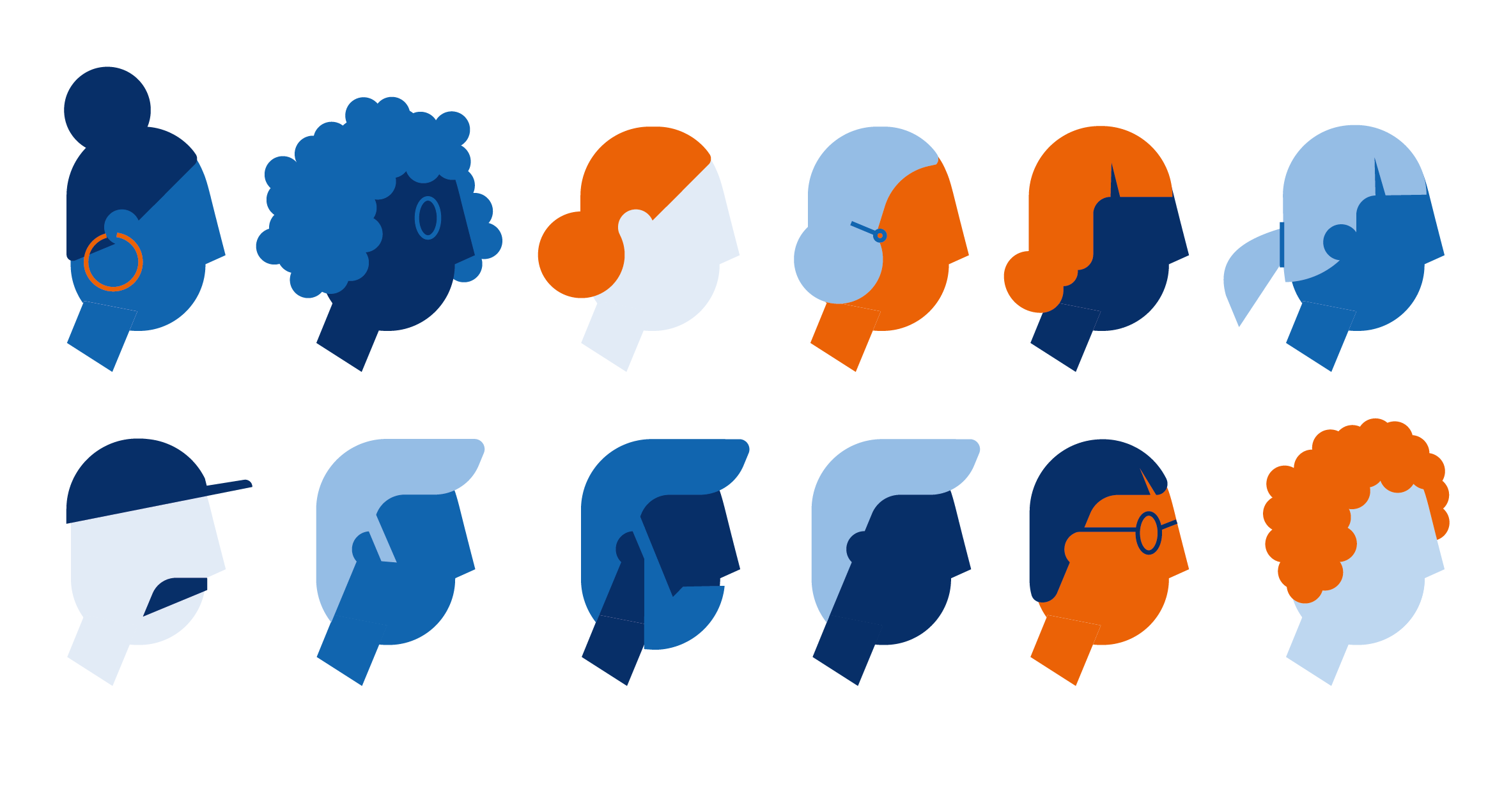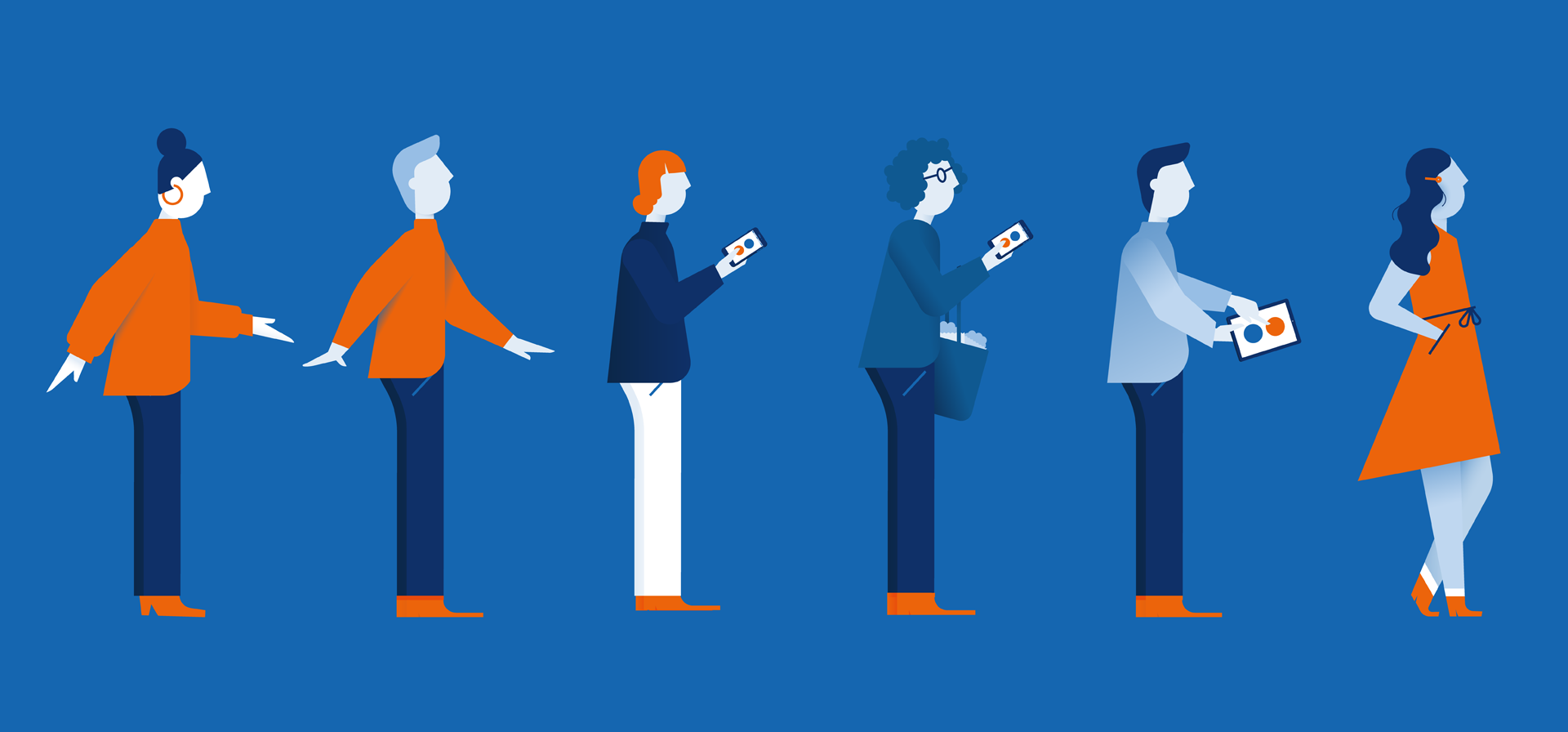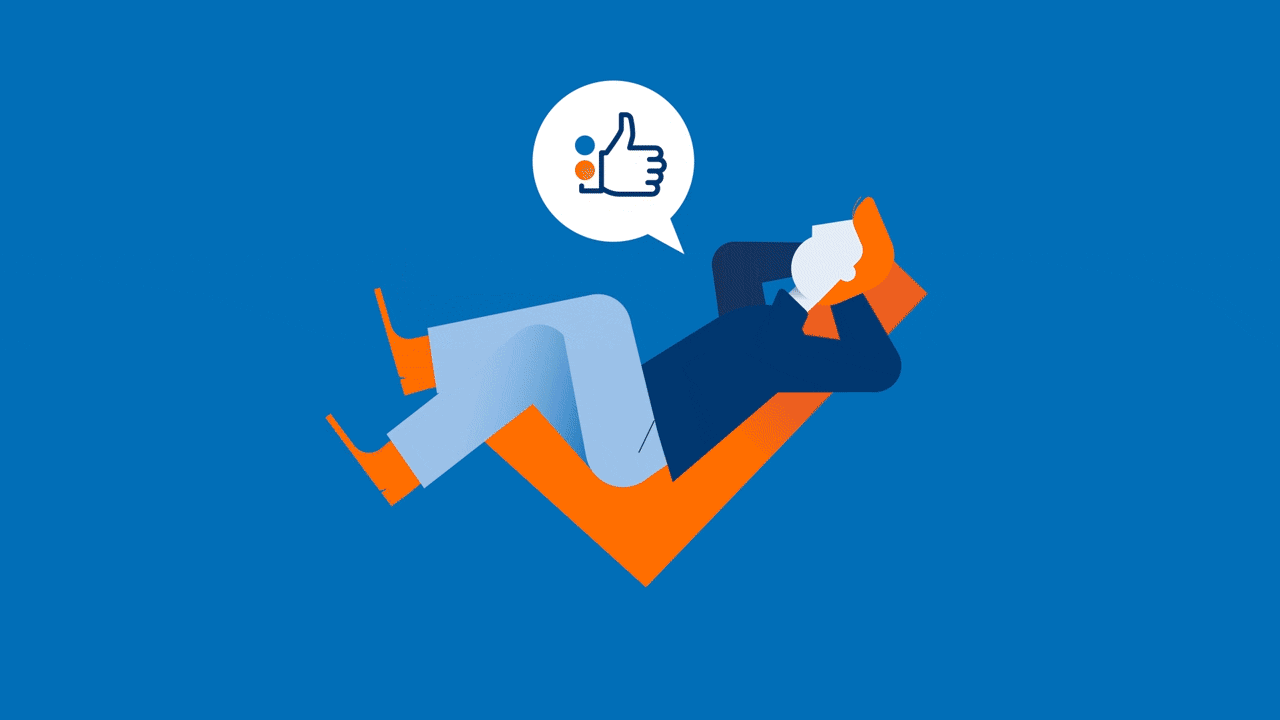Illustrations as a fixed design element within a corporate design system have recently become more and more popular. There are many good reasons to take a closer look at this topic.
Immediately in the mind
Illustrations are individual and instantly recognisable. In a time when visual codes have to be kept to a minimum and the brand is sometimes only recognisable by the colour and design of a button, illustrations are a powerful way to get the character back into the brand. They can effectively shape a brand's identity and strengthen its visual character. Illustrations have managed to rise from comic stepchild to favourites of global brands in recent years.
Abstract becomes tangible
Especially when it comes to technical topics – which we often deal with at wirDesign – a problem defines itself when it comes to finding images: the topics we deal with as an agency are becoming more and more complex, but against the backdrop of the digital information jungle, they have to be explained all the more simply and comprehensibly. The products we are dealing with are often digitally defined and are literally not immediately tangible. They lack form.
Image content is predominantly concerned with the interaction of people with various devices. In terms of photography, we would be dealing with people who are sitting at their computer, tablet or smartphone and interacting with their devices at home, at work or in the city.
Here, illustrations can be a good alternative. They can be used to tell stories in a condensed form in a small space. You can break down complex topics into easy-to-understand images and lighten up difficult subject matter. No one expects illustrations to be as serious as corporate photography usually is. They can be quirky, unusual, entertaining, irritating.
The modular principle
As a modular construction kit, the illustrations can be easily integrated into a wide variety of formats and media and are fully editable.
The »atomic design principle« originally comes from software development and was used by programmers. Here, you take the smallest building block as a basis and build on it in a modular way until a finished product is created at the end. In corporate design, we can make use of this by thinking in terms of individual design elements. The subject of illustration, as one of these elements, also gains even more possibilities if you also look at it in modular terms.

Illustration construction kits consist of individual illustration components such as faces, hairstyles, bodies and clothing, which can be variably assembled into whole people. With the help of further illustrative objects, they can also be quickly expanded into larger scenes with people, environments and landscapes. The resulting illustrations can be adapted and reassembled again and again, are flexible in format and work in all media and applications, from small to large, from wide to narrow, from horizontal to vertical.
Ready to go!
Illustration libraries, such as »Humaaans«, offer a huge selection of illustrations free of charge and can even be customised to a certain extent. Especially for start-ups and smaller companies that are still at the beginning and need to get a product »on the road« quickly, these illustration kits are a quick and inexpensive way to generate images and tell their stories.
Illustrations as a brand-defining element offer many more opportunities
It becomes exciting when you try to combine the character of the brand with the style of the illustrations down to the smallest detail and thus not just create a set of pretty vectors, but develop a really concise illustration style that derives directly from the brand.
We did this for our client VR Payment. For the financial service provider, which is part of the cooperative financial group within the Volks- und Raiffeisenbanken, it quickly became clear that using illustrations »from the ready-made kit« quickly reaches its limits.
The illustration style should be as strongly linked to the brand as possible and at the same time be adaptable to the most diverse requirements. Due to the complex topics and the range of stories, the style had to function in a modular way and be individual at the same time.


In a first step, we went back to the core of the brand. We examined the character of the brand, the tonality in communication and the positioning that the brand gives itself within its field. In a second step, we examined the individual brand codes of the brand - i.e. design elements such as colour, font, design language and the »colon« that the brand uses as a concise element within its communication. All these parameters form the starting point for developing an illustration style.
The colon is the basis for the later grid. It defines the shape of the head, becomes a marking element within an image, or forms a frame for a scene as a background element. The grid, proportions and relationships of individual elements, objects and figures are all based on the basic elements of VR Payment and together form a set of illustrations consisting of various objects, backgrounds or people. Due to their individual style, all these elements can be used both statically and animated.
This results in a multitude of possible applications that work across all media. In this way, we tell stories, explain complex things simply and present the brand to its visual character even apart from the otherwise usual brand codes such as logo and font. And at the same time, we facilitate consistent brand management across channels.

Read more:
VR Payment Illustrationen bei behance
Illustrations ©VR Payment



